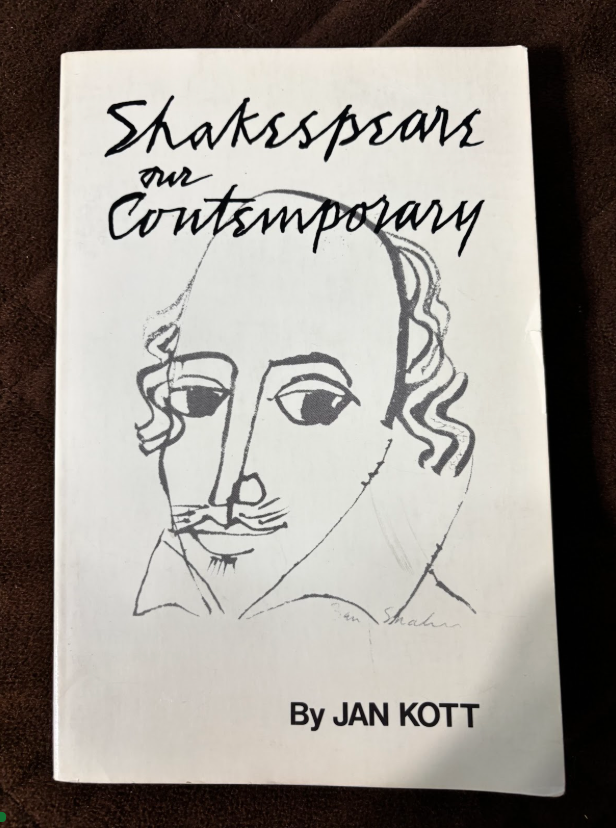The Real Death of Bertha Mason
Amaya Ranatunge ’28 reviews “Wide Sargasso Sea” by Jean Rhys, a story about power, identity, and the price of silence. She highlights the novel's achievement in challenging “Jane Eyre's” image of the crazy woman in the attic and its value in a world where so many voices remain unheard.
“There are always two deaths, the real one and the one people know about.”
— Jean Rhys
Everyone knows Bertha Mason, the madwoman in the attic from “Jane Eyre.” Mr. Rochester’s secret wife with the low, suppressed, demoniac laugh. Insane, savage, her dark, thick, grizzled hair reminiscent of a vampire or a beastly hyena. Everyone also knows about her death in the ghastly fire she lit herself, burning down Rochester’s mansion and nearly taking poor Jane with her if not for our heroic Mr. Rochester.
But have you ever wondered how she became the madwoman in the attic? What shattered her so completely that she lost her sanity? If that thought has ever crossed your mind, or you’re just cynical enough to question every fairytale ending, then “Wide Sargasso Sea” by Jean Rhys is the book for you.
This novel reimagines the life of Bertha Mason, reminding us of how much is shaped by the stories others tell about us. But what happens when those stories are wrong? When they bury the truth beneath layers of misunderstanding, prejudice, and neglect? Worst of all, what happens when you have no voice to scream for justice? This is exactly what Rhys addresses in “Wide Sargasso Sea;” she exhumes a forgotten voice, giving life to a character who, for too long, had only one death: the one people knew about.
This is a story about her real death and her life before the attic.
Before Bertha Mason, she was Antoinette Cosway, a Creole heiress born in post-emancipation Jamaica. The book’s first section, narrated by Antoinette herself, recalls her social isolation. Raised on a crumbling plantation shadowed by clashes between the collapsing white aristocracy and the impoverished servants, Antoinette grows up detached from the world — too white to belong to the Black Jamaican community, too Caribbean to be accepted by the British colonizers. Following two disastrous marriages, her mother descends into madness, her home is set ablaze by her own servants, and her Jamaican childhood friends betray their friendship in the heat of emancipation struggles. By the time she is married off to an unnamed Englishman, after years of solitary learning in a decaying convent, she is already teetering on the edge of ruin.
Her mysterious, unnamed husband, undeniably Mr. Rochester, narrates the second section. He illustrates their devastating marriage: unhappy, unsuccessful, and unfaithful. I was rather impressed by how fast Rhys switched my attitude towards the characters: the insane malignant Bertha, now an oppressed victim of racism and misogyny, and heroic Rochester, now the heartless, capitalistic beast who bought a wife for 30,000 euros, only to later decide that a woman with flaws was not worth the money, and goes all the way to remove this taint from his noble English life.
What follows this is a slow, agonizing unraveling. The man she married sees only the rumors surrounding her: whispers of madness, corruption, and an inheritance tainted by Creole blood; “a madwoman coming of a mad family.” Stripped of everything, Antoinette is pushed toward the tragic fate that readers already know: the ultimate snap — her real death — and the beginning of her life in the attic.
“Wide Sargasso Sea” might seem like a story about madness. But in Rhys’ version, this is no simple story of a woman gone mad. It is the story of a woman made mad by a world that refuses to let her exist on her own terms. Rhys masterfully dismantles the idea that Antoinette was simply fated to lose her mind, revealing instead the betrayals, deceptions, and cultural erasures that pushed her there.
Colonialism looms over every page. Antoinette is caught between worlds, neither fully accepted by the Black Jamaicans, who see her as the daughter of former slave owners, nor by the British, who view her Creole identity as impure. She is trapped in a liminal space, her very existence deemed unnatural. This racial and cultural displacement mirrors her personal downfall, as Rochester strips her of her name, her heritage, and, ultimately, her voice.
Then there is the question of power. Rochester — cold, resentful, and insecure — does not enter the marriage as a villain. But his gradual transformation into Antoinette’s oppressor is chilling in its subtlety. He renames her “Bertha,” isolates her from the world, and controls her narrative until she becomes the very thing he fears: a woman he cannot understand, a woman he convinces himself must be mad. In “Jane Eyre,” Bertha’s madness is a given. In “Wide Sargasso Sea,” it is a slow, deliberate breaking. And that makes it all the more devastating.
This book is not a mere prequel to “Jane Eyre.” “Wide Sargasso Sea” forces us to reconsider everything we know about the “madwoman” in the attic. If you’ve ever felt the weight of being misunderstood or being caught between worlds, or if you’ve ever questioned the truth behind the stories we accept as fact, “Wide Sargasso Sea” will stay with you long after the final page. It’s not just a story about madness. It’s a story about power, identity, and the price of silence. It’s a story about the real death of Antoinette Cosway. And in a world where so many voices remain unheard, it’s a book that demands to be read.




Comments ()